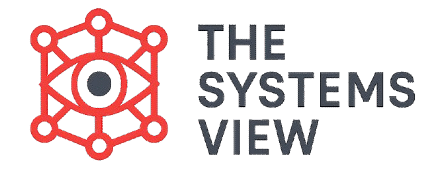We’ve talked about how success can create its own limits. Now, let’s look at a different kind of pattern which is the fourth systems archetype called Drifting Goals. This archetype happens when a group or organization cannot reach a goal, and instead of working harder to reach it, they simply lower the goal. Over time, the goals get worse and worse, and the group’s performance slowly declines.
Imagine a student who wants to get a B in a class. After the first test, they get a C, and they feel a little discouraged. Instead of studying more, they decide that getting a C is “good enough” for the class. After the next test, they get a D, and they lower their goal again, thinking, “At least I’m not failing.” This is the core idea of “Drifting Goals”—a slow, silent decline in standards.
What is the “Drifting Goals” Archetype?
This archetype is a pattern where a gap between a goal and the current performance is closed, not by improving performance, but by lowering the goal. The key parts of this pattern are:
- The Goal: A specific standard or target the system is trying to reach (e.g., to have a product with zero defects).
- The Performance Gap: The difference between the goal and the actual performance (e.g., the product has some defects).
- Balancing Loop 1 (Effort): This is the force that tries to close the gap by working harder or improving performance. It’s the right way to fix the problem. (e.g., putting in more effort to fix the defects).
- Balancing Loop 2 (Drifting Goals): This is the force that tries to close the gap by lowering the goal to match the current performance. It’s the wrong way to fix the problem and is often more tempting because it’s easier. (e.g., deciding that a few defects are “acceptable” and lowering the goal to match).
The trap is that the second balancing loop is easier to do, and it gives a quick sense of relief because the “gap” is gone. But it leads to a long, slow decline in standards.
Important: The key lesson of “Drifting Goals” is that when you can’t reach a standard, you have two choices: either work harder to reach it or lower the standard. The second choice is always easier in the short term, but it leads to long-term failure.
A Common Example: Declining Service Quality
This archetype is often seen in customer service.
- Goal: A company wants to answer all customer service calls within one minute.
- Performance Gap: The company starts getting more calls and can only answer them in five minutes.
- Drifting Goals (Wrong Solution): Instead of hiring more people, the company decides that answering calls within five minutes is “the new goal.” They have now lowered the bar for themselves.
- Further Decline: As more calls come in, the wait time goes up to ten minutes. The company again lowers the goal, telling itself that “ten minutes is good enough for now.” Over time, the service gets worse and worse, and the customers become unhappy.
The Practice Example from the Ebook: Declining Product Standards
The ebook gives an example of a company that slowly lets its product quality decline.
- Goal: The company has a reputation for making high-quality products. They have a strict standard that they must meet.
- Performance Gap: Over time, the company faces pressure to lower costs or speed up production. They are no longer able to meet their high-quality standards.
- Drifting Goals (Wrong Solution): The leaders decide to quietly lower the standards, telling themselves it’s necessary to compete. They change their goal to match the lower-quality products they are now making.
- Further Decline: Once the standards are lowered, it becomes easier to make even more compromises. The quality continues to decline, and the company’s reputation is eventually ruined.
How to Find a Lasting Solution
Solving this archetype requires you to hold your ground and not lower your standards.
- Commit to the Goal: First, you have to get everyone to agree that the original goal is worth fighting for. The group must be deeply committed to the standard, no matter how hard it is to reach.
- Use the First Balancing Loop: Focus your energy on the difficult, but correct, solution. Work harder, find new ways to improve, or invest in new tools or people. Don’t take the easy way out by changing the goal.
- Create a Force to “Hold the Vision”: A strong vision or an outside force can help prevent goals from drifting. For example, a company can have a quality-control team that is not allowed to change the standards, or a leader can constantly remind everyone of the high goals.
- See the Long-Term Effect: Remind people that lowering the standard is a slow path to failure. Show them that while it feels good in the short term, it will destroy the company or team in the end.
Conclusion
The “Drifting Goals” archetype is a subtle but dangerous pattern. It allows a group to slowly lower its standards over time, believing that it is making a smart choice to solve a problem. In reality, it is creating a path to long-term failure. By learning to recognize this pattern, we can resist the temptation to lower the bar and instead commit to the hard work of meeting our goals. This is the only way to protect our standards, improve our performance, and avoid a slow, silent decline.



